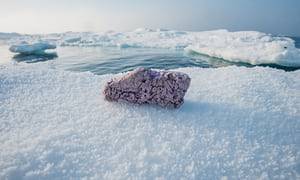currentsinbiology:If you care about the the oceans and all the life therein or if you are more self-
currentsinbiology:If you care about the the oceans and all the life therein or if you are more self-centered, maybe just like seafood, pay attention!How did that get there? Plastic chunks on Arctic ice show how far pollution has spreadA British-led expedition has discovered sizeable chunks of polystyrene lying on remote frozen ice floes in the middle of the Arctic Ocean.The depressing find, only 1,000 miles from the north pole, is the first made in an area that was previously inaccessible to scientists because of sea ice. It is one of the most northerly sightings of such detritus in the world’s oceans, which are increasingly polluted by plastics.Estimates suggest that there are more than 5 trillion pieces of plastic floating on the surface of the world’s oceans. It has been claimed that there is now enough plastic to form a permanent layer in the fossil record. Dr Ceri Lewis, scientific adviser to the expedition based at the University of Exeter, has previously warned that people produce around 300 million tons of plastic a year, roughly the same weight as all the humans on the planet. Around half of all plastic produced is used once and then thrown away.A significant concern is that large plastic pieces can break down into “microplastics” – tiny particles that are accidentally consumed by filter-feeding animals. The particles remain in animals’ bodies and are passed up the food chain, threatening wildlife at all levels from zooplankton to apex predators such as polar bears. In an attempt to gauge the presence of microplastics in Arctic waters, the scientists intend to test samples of seawater they collected in nets with holes smaller than a millimetre across. Plastic pollution on an ice floe in the middle of the Arctic Ocean. Photograph: Conor McDonnell -- source link
